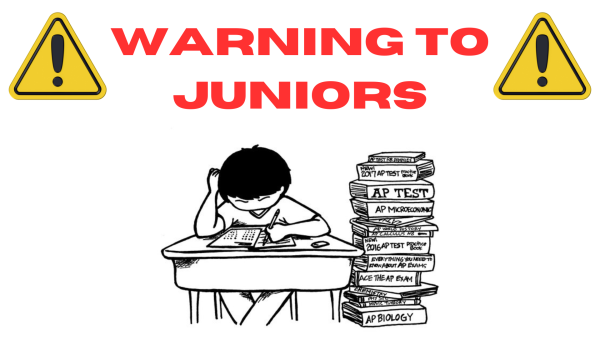Dress Code Under Attack
A students perspective on the newly implemented AMHS dress code
Protests against dress codes have been a recent phenomenon on social media. Rising teenage girls see the issue at hand as what it means to be an adolescent girl in today’s society. They view the dress codes as a way they feel objectified, sexualized, unheard, classist, and homophobic in the world they live in. At AMHS, our new principal Mr. Perlmutter created a saying of ____ My Magnet in hopes of creating a community in our school. However, how do you expect girls to feel part of a community where people twice their age constantly objectify them? So when the girls of Academic Magnet push back on the dress code, they demand to be seen, heard, and, more importantly, respected.
One of the most influential questions is, where are the teachers who see the possibility for meaningful conversations about the development of institutional policies? In recent times we have seen the battles for freedom of speech, choice, and democracy. However, within a public school, we do not have the freedom to dress as we please? Administrators lack to see or encourage critical thinking about cultural differences or to examine the impact of media and pop culture on gender identity and the influence of rampant marketing and consumerism.
In the last several days on campus, myself and other girls have been getting called out for “dress code violations.” AMHS has attempted to change the dress code this year and how it is dealt with. But personally, I see no change. yes, the dress code became more lenient. However, the administration decided to crack down on one specific aspect of the newly implemented dress code – the midriff. Midriff is defined as the region of the front of the body between the chest and the waist. Or, in other words, your stomach. This new, strictly enforced rule leads to “slut-shamming” for outfits that would be acceptable in several different scenarios, as well as outfits that would be allowed to be worn at any other school in the district. This new rule is creating more harm than good. The female anatomy is already highly sexualized. AMHS admin and teachers are now objectifying midriffs, teaching males that if a woman shows her stomach, it shall be considered inappropriate.
Academic Magnet has a different school community than all the other schools within the CCSD district. A challenging curriculum creates a more sophisticated learning environment. An example of this is JICHS’s recent viral TikTok trend of “devious lick,” which caused thousands of dollars of school damage. At Magnet, we do not have to face these issues as most students have an excellent understanding of right and wrong. As our school has not had a fight in several years, compared to any other school in the county, I think we see a significant difference in culture. As the number 2 school in the nation, you would think that we would get more privileges and have more leniency than any other school – specially with something as simple as with what we wear.
A student at AMHS described her experience with the new dress code. She explained how certain administrators caused extreme distress as she was already highly overwhelmed and busy and was taken out of class to be forced to deal with the issue. It was revealed that in the morning, after getting out of her car walking into the building, she was directed to go to Mrs. Vogel’s office to grab another shirt. A fellow student described it as “An ugly green shirt.” She had to change without any explanation. This student also revealed that several other teachers confirmed that her outfit choice was acceptable, and they did not find any possible issue with what she was wearing. Instead, her teachers were made aware that they “missed” her infraction. This ultimately disrupts the bond between teachers and students while also forcing teachers to deal with an uncomfortable issue that they may not agree with.
A dress code promotes rape culture. It teaches people that what a girl is wearing reveals who she is as a person, which is entirely wrong. A quote from Coshandra Dillard, a writer for Teaching Tolerance who covers equity issues in education, explains the idea. “If we police what girls are wearing, it implies that it is on the girl to prevent any inappropriate behavior from someone else because of what she’s wearing. I’m not sure if schools realize how harmful it is to shame or blame girls for how someone may react rather than addressing that issue in particular. There shouldn’t be inappropriate behavior, period.”
An article about a high school that recently changed its dress code revealed its principal’s feelings about it. Dr. Marcus Campbell, Assistant Superintendent and Principal of Evanston Township High School, revealed his thoughts on their newly changed dress code. “Since the new guidelines were put in place,” Campbell says, “absolutely nothing has changed as far as behavior. Students have taken it upon themselves to know what’s decent to wear to school and what is not, so it’s not like we have kids coming to school in bikinis or anything like that. They’re just comfortable.”
Our new dress code came from the Lucy Beckham High School dress code; however, AMHS is not Lucy Beckham. I can empathize with the teachers who struggle with dealing with an infraction as not only is this confrontation uncomfortable for students, but it is also for the teachers. After speaking with several teachers about the issue, I can understand their viewpoint. However, I believe that victim-blaming has a more consequential effect on young minds at the end of the day. Instead of jumping on any student that has broken a rule, there should be a mature talk between admin and students to encourage critical thinking and understanding on both ends of the spectrum.
Sources:
https://www.learningforjustice.org/magazine/locd-out-how-thoughtless-dress-codes-can-harm-students-from-day-one








